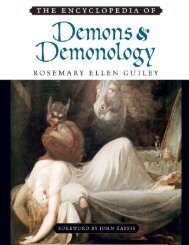DENIZENS OF ALIEN WORLDS
danizen1
danizen1
- No tags were found...
Create successful ePaper yourself
Turn your PDF publications into a flip-book with our unique Google optimized e-Paper software.
12<br />
Let us keep in mind that Pakistan is a poor country. Poverty is defined as the<br />
condition in which, among other things, one cannot even get the minimum caloric<br />
requirement of 2,350 calories per day. In 2000-01 one needed an income of Rs 748 per<br />
month to buy food containing these many calories. According to a survey of 726<br />
households in February 2003, about 31.8 per cent people are below this poverty line.<br />
Even worse, this poverty is unevenly spread out with tremendous differences between the<br />
rich and the poor, the city and the village, and between men and women. For instance, the<br />
class-wise share of income in the country is as follows:<br />
Percentage Share of Income Between Socio-economic Classes<br />
Year Lowest 20% Middle 60% Highest 20%<br />
1998-99 6.2 44.1 49.7<br />
Source: GOP 2003: 50<br />
Poverty has increased since 1979 when the share of the lowest 20% was 7.4%<br />
while that of the highest was 45%. The ratio of the highest (22%) to the lowest (20%)<br />
rose from 6.1% to 8% (GOP 2003: 50).<br />
The disparity between the cities and the villages too is striking. In 2003, while<br />
38.65 per cent people are below the poverty line in the villages, those below that level in<br />
the cities are 22.39 per cent.<br />
In short, inequalities in income---and related to that many other factors including<br />
access to quality educated---are acute and, what is worse, seem to be growing. One of the<br />
major emphases of this study is to find out what differences are there in the educational<br />
institutions of the rich and the poor and to what extent the state itself creates them or, at<br />
least, perpetuates them.<br />
For the historical part of the study I have consulted historical sources. For the<br />
contemporary, descriptive part I have looked at the budgets of institutions, their model of<br />
governance, their fees structure and other relevant facts about them. I have also<br />
interviewed and interacted with students, teachers and administrators to obtain insights<br />
into their experiences. For the third part I, assisted by my research associates, have<br />
carried out a survey using the non-random stratified, cluster sampling method (see












